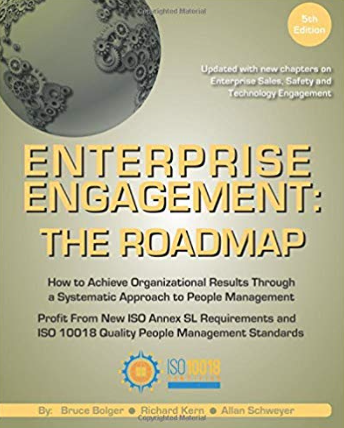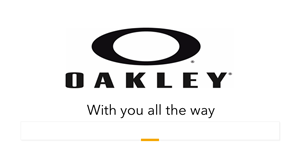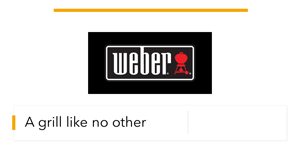The Power of Safety Programs: Enhancing Workplace Safety and Boosting Financial Performance
 The founder and CEO of a Texas-based incentive company provides a concise overview of the benefits and key design elements of an effective safety program.
The founder and CEO of a Texas-based incentive company provides a concise overview of the benefits and key design elements of an effective safety program.By Karen McClenny
Financial Benefits of Safety Incentive Programs
Supporting Data
Additional Benefits of Safety Incentive Programs
Designing Effective Safety Incentive Programs
Tracking Program Performance
Conclusion
About the Author
Click here for links to RRN Preferred Solution Providers.
Safety incentive programs are a strategic tool for enhancing workplace safety, boosting employee morale, and improving a company’s bottom line. By encouraging safe behaviors through rewards and recognition, these programs not only reduce accidents and injuries but also foster a culture of accountability and proactive safety practices.
Companies that invest in these programs experience increased productivity, reduced costs associated with workplace incidents, and greater employee satisfaction. This article explores the financial benefits, best practices, and critical components of effective safety incentive programs, highlighting their role in protecting both employees and business interests.
Financial Benefits of Safety Incentive Programs
Safety incentive programs provide substantial financial returns for companies willing to invest in them. Studies have shown that for every dollar invested in workplace safety, companies see an average return of $4 to $6 in benefits (ROI), including both direct and indirect cost savings. Key financial benefits include:
-
Reduction in Workplace Injuries
Effectively designed safety incentive programs lead to a significant reduction in workplace injuries, resulting in lower workers' compensation costs, fewer lost workdays, and reduced legal liabilities. Studies suggest companies can see a return on investment of $4 to $6 for every dollar spent on safety programs due to reduced injury rates alone. -
Increased Productivity
With fewer accidents, employees spend less time off work, leading to higher productivity. Companies with effective safety programs often experience a productivity increase of 20.4%. -
Insurance Premium Reductions
Insurance companies often offer lower premiums to businesses that implement safety programs. Reports indicate savings of up to 25% on workers' compensation premiums for companies with proven safety records. -
Employee Retention and Satisfaction
Employees are more likely to stay with a company that prioritizes their safety. Reduced turnover saves thousands in recruitment and training costs, while improved job satisfaction enhances overall morale. -
Compliance and Avoiding Penalties
Safety incentive programs help ensure compliance with safety regulations, reducing the risk of fines from organizations like OSHA. Avoiding these fines can be a significant financial benefit.
Supporting Data
- OSHA (Occupational Health and Safety Administration) reports average savings of $4 to $6 for every dollar invested in injury prevention programs.
- The National Safety Council found that the average cost of a medically consulted injury is $40,000, highlighting the substantial savings possible by preventing even a few incidents.
Additional Benefits of Safety Incentive Programs
- Enhance a Company Reputation: Safety incentive programs help build a positive reputation by demonstrating a company's commitment to its employees' safety, enhancing brand image, avoiding negative incidents, and fostering trust among stakeholders. This improved reputation can lead to numerous business advantages, including increased loyalty, better talent acquisition, and stronger community ties.
- Team Cohesion: Incentive programs promote teamwork and collective safety goals, strengthening workplace camaraderie and safety culture.
- Continuous Improvement: Regular updates to incentive programs ensure that safety practices evolve and remain effective.
Designing Effective Safety Incentive Programs
While the primary objective is to foster a culture of safety, programs must be designed carefully to avoid discouraging workers from reporting incidents. Properly designed programs work alongside comprehensive safety policies and ongoing training and reinforcement to enhance overall workplace safety. Our approach, developed over decades of experience, integrates an understanding of OSHA requirements, communication, training, and reward systems to create a holistic and interconnected safety program. Effective communication ensures safety protocols are clear, training empowers employees to adhere to these practices, and rewards reinforce safe behaviors, creating a safety-driven workforce.
Tracking Program Performance
- Monitoring the performance of safety incentive programs is crucial for their ongoing success. By measuring key outcomes, such as the reduction in accidents or near-misses, companies can evaluate the effectiveness of incentives in promoting positive behaviors. Regular evaluation helps identify areas needing improvement, allowing programs to be adjusted and refined over time.
- Setting clear, measurable goals and regularly collecting data on key safety metrics are vital steps in this process. Tools like surveys and performance dashboards can monitor progress over time, allowing for consistent evaluation. This data-driven approach enables informed decision-making and supports the continuous improvement of safety programs.
Conclusion
Investing in safety incentive programs is a strategic decision that benefits both employees and the organization. By fostering a culture of safety, these programs reduce workplace injuries, enhance productivity, lower costs, and improve employee satisfaction. Careful design and continuous evaluation ensure that these programs remain effective and align with the organization's safety goals. Ultimately, safety incentive programs protect the most valuable asset—people—while driving financial performance and creating a safer, more cohesive work environment.
About the Author
By Karen McClenny is owner KMC Incentives, a provider of workplace solutions dedicated to helping organizations enhance safety culture and achieve financial success through innovative safety incentive programs. With decades of experience in program design and a deep understanding of OSHA requirements, we specialize in creating customized safety incentive systems that promote safe behaviors, reduce workplace injuries, and improve employee morale.
Contact: karen@kmcincentives.com
How RRN and Brand Media Coalition: Your Partner in Success in Incentives, Rewards, and Recognition

Published by the Enterprise Engagement Alliance at TheEEA.org
- The only weekly news, how-to and resource publication of record for the Incentive, Rewards, and Recognition field.
- The only marketing agency focusing specifically on the IRR and broader engagement marketplace.
- All the industry news, research, announcements, and how-to articles read by over 20,000 end-users in sales, marketing, and human resources; incentive, recognition, loyalty and promotional companies, as well as marketing and human resources agencies, seeking to enhance performance through effectively designed incentive programs.
- Unparalleled business development services for engagement, incentive and incentive travel, recognition firms; brands, gift cards and master fulfillment companies, and technology firms, featuring ROI-based business development strategy design and ongoing digital and social media and e-newsletter communications to help marketers profit in the coming era of cookie-less marketing.
- Unique abilities for solution providers to sponsor authoritative, evergreen content directly related to what they sell through the EEA’s Effective Practices series on articles in our media platforms.
- EEA YouTube Channel with over three dozen how-to and insight videos and growing with nearly 100 expert guests.
- Access to new technologies from EEA preferred solution providers enabling brands to create their own points-based or transactional redemption site.
- Unparalleled expertise in program design, return on investment measurement, reporting, and prescriptive analytics.

.jpg)















